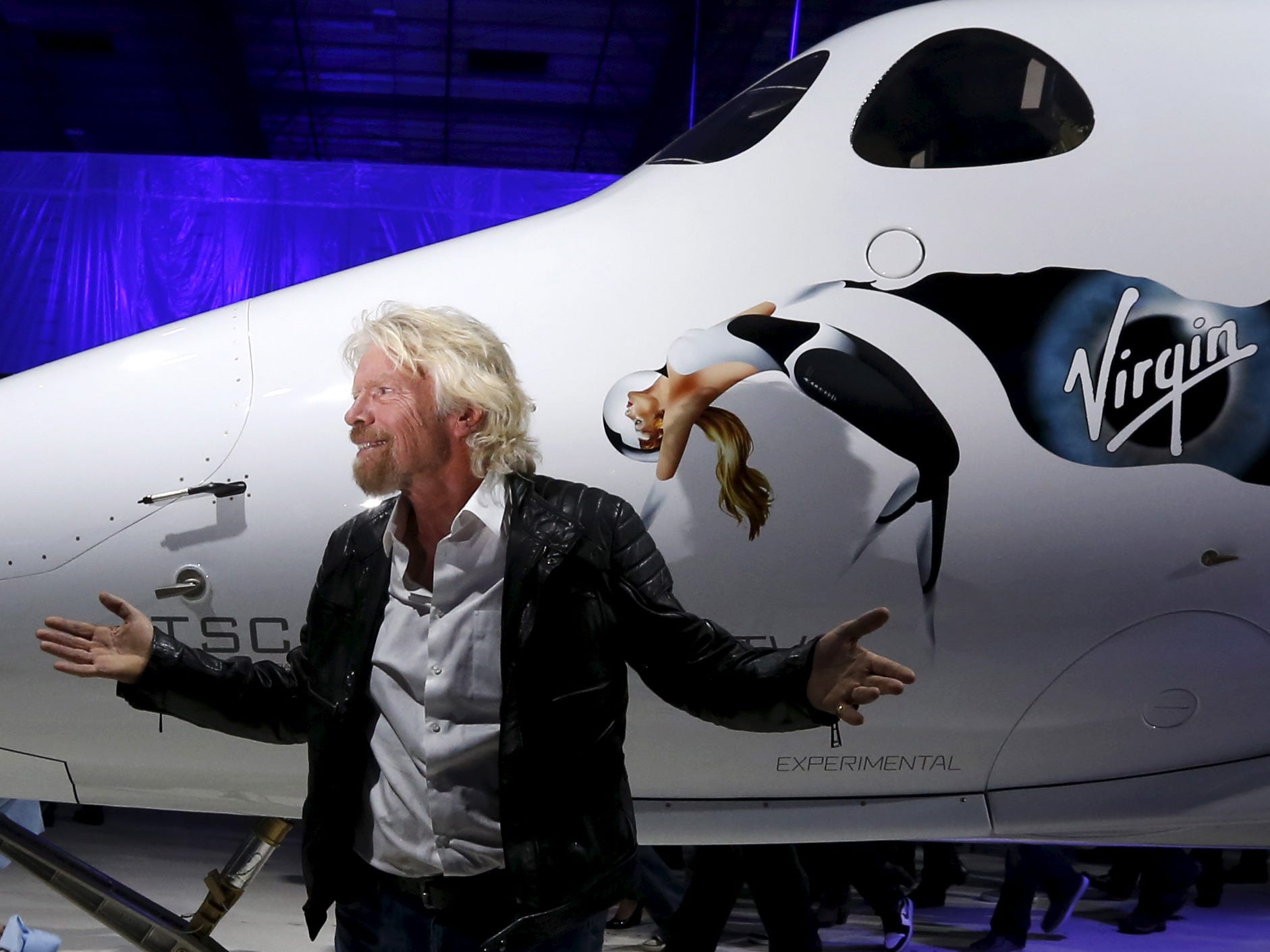
Lucy Nicholson/Reuters
- Billionaire Richard Branson, the founder of Virgin Galactic, plans to fly to the edge of space on Sunday.
- Branson will ride the company's space plane, which won't reach orbit.
- Branson is set to launch just nine days before Jeff Bezos flies on his own company's rocket.
- See more stories on Insider's business page.
Billionaire Richard Branson plans to rocket to the edge of space aboard his company's space plane this weekend.
The Virgin Galactic vehicle, called SpaceShipTwo, won't blast off from a launchpad. Instead, it gets carried aboard a double-fuselage mothership, which climbs to about 50,000 feet (nearly 10 miles up), then releases the space plane. After that, the pilots must fire its rockets, point almost straight upwards, and accelerate to more than three times the speed of sound towards the edge of space.
Sunday's flight is the first time the vehicle will carry a full crew. Four Virgin Galactic employees will stand in as passengers, including Branson, who founded the company in 2004. The others are Beth Moses, Virgin Galactic's chief astronaut instructor; Colin Bennett, the company's lead operations engineer; and Sirisha Bandla, its vice president of government affairs and research operations.
They all aim to evaluate the passenger experience, since Virgin Galactic wants to start flying paying customers above Earth next year. Already, more than 700 people have signed up for seats, including Tom Hanks, Justin Bieber, and Lady Gaga, Today reported.
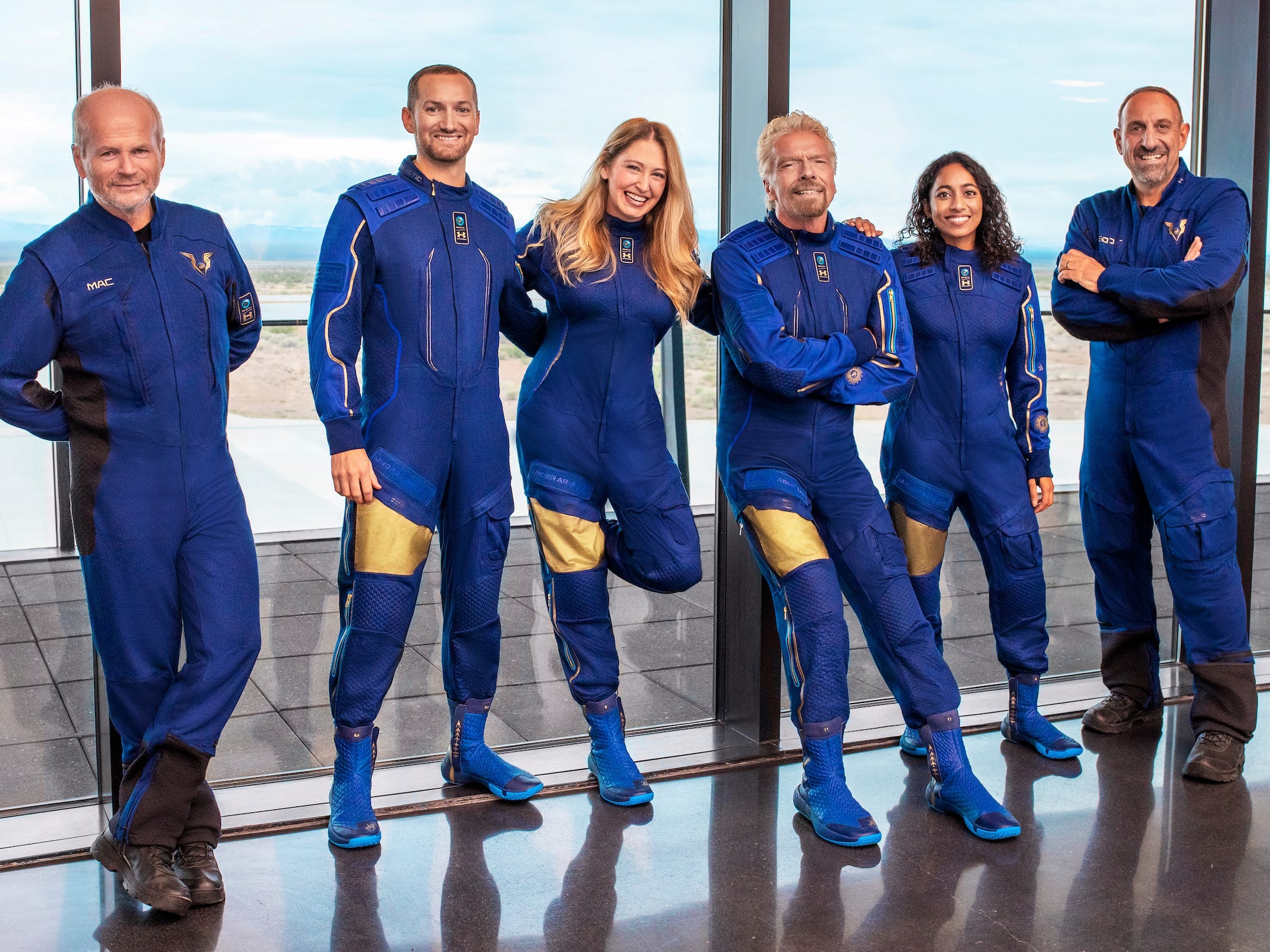
Virgin Galactic
Branson and his crew are scheduled to lift off from the company's facilities at Spaceport America, in New Mexico, around 9 a.m. ET on Sunday. That's just nine days before Jeff Bezos plans to launch on a similar flight aboard the vehicle built by his own company, Blue Origin.
Though Branson announced his plan just weeks after Bezos shared his, the Virgin Galactic founder insists this isn't a competition.
"I completely understand why the press would write that," he told The Washington Post. "It's just an incredible, wonderful coincidence that we're going up in the same month."
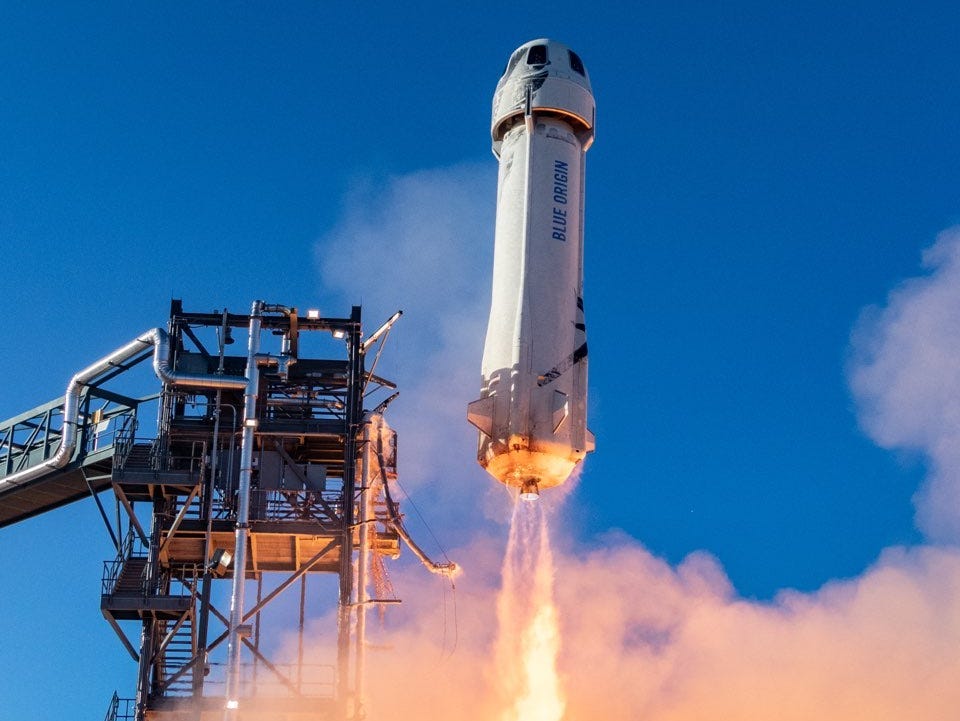
Blue Origin
Still, the two flights are so close that they invite comparison. Both crews will skim the edge of space without reaching orbit, both flights are the companies' first with a group of passengers, and both trips are designed for tourists. But there are some key differences: Branson will ride a space plane, not a capsule launched by a rocket, and some say he won't even reach space.
Virgin Galactic's space plane gets dropped off in the air
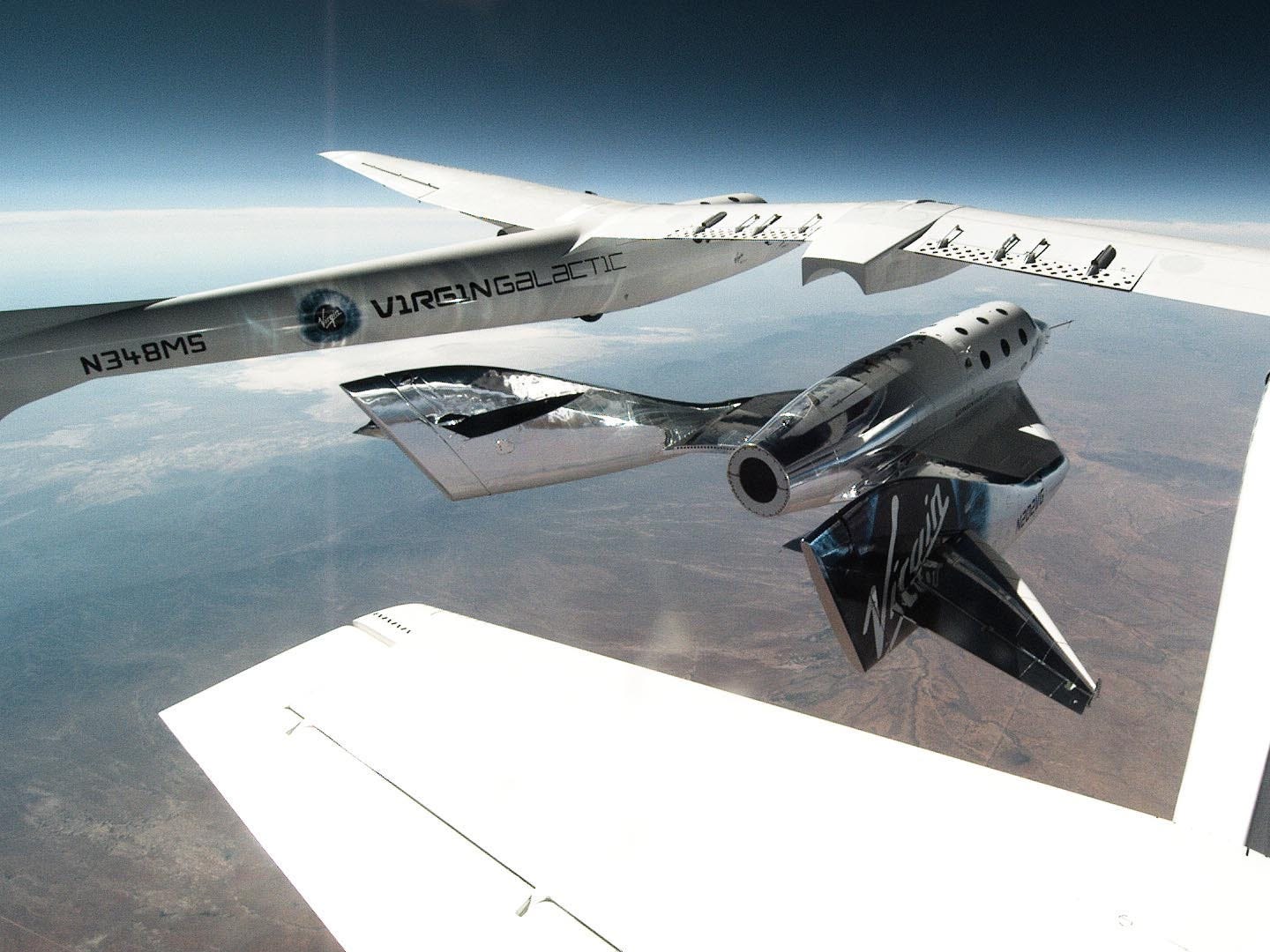
Virgin Galactic
Unlike Bezos, who will soar into space aboard a New Shepard rocket, Branson is taking a winged, piloted vehicle to the upper limits of Earth's atmosphere.
The SpaceShipTwo vehicle he's riding, called VSS Unity, requires two pilots and can hold up to six passengers. They'll all climb aboard the space plane, attached to the bottom of the mothership - named "VMS Eve" after Branson's own mother - on Sunday morning.
Once the VSS Unity is about 55 miles above sea level, the pilots will cut off the engines and allow the vehicle to drift. For about five minutes, the passengers will feel weightless. Through the space plane's 17 windows, they'll be able to see the Earth curving below them.
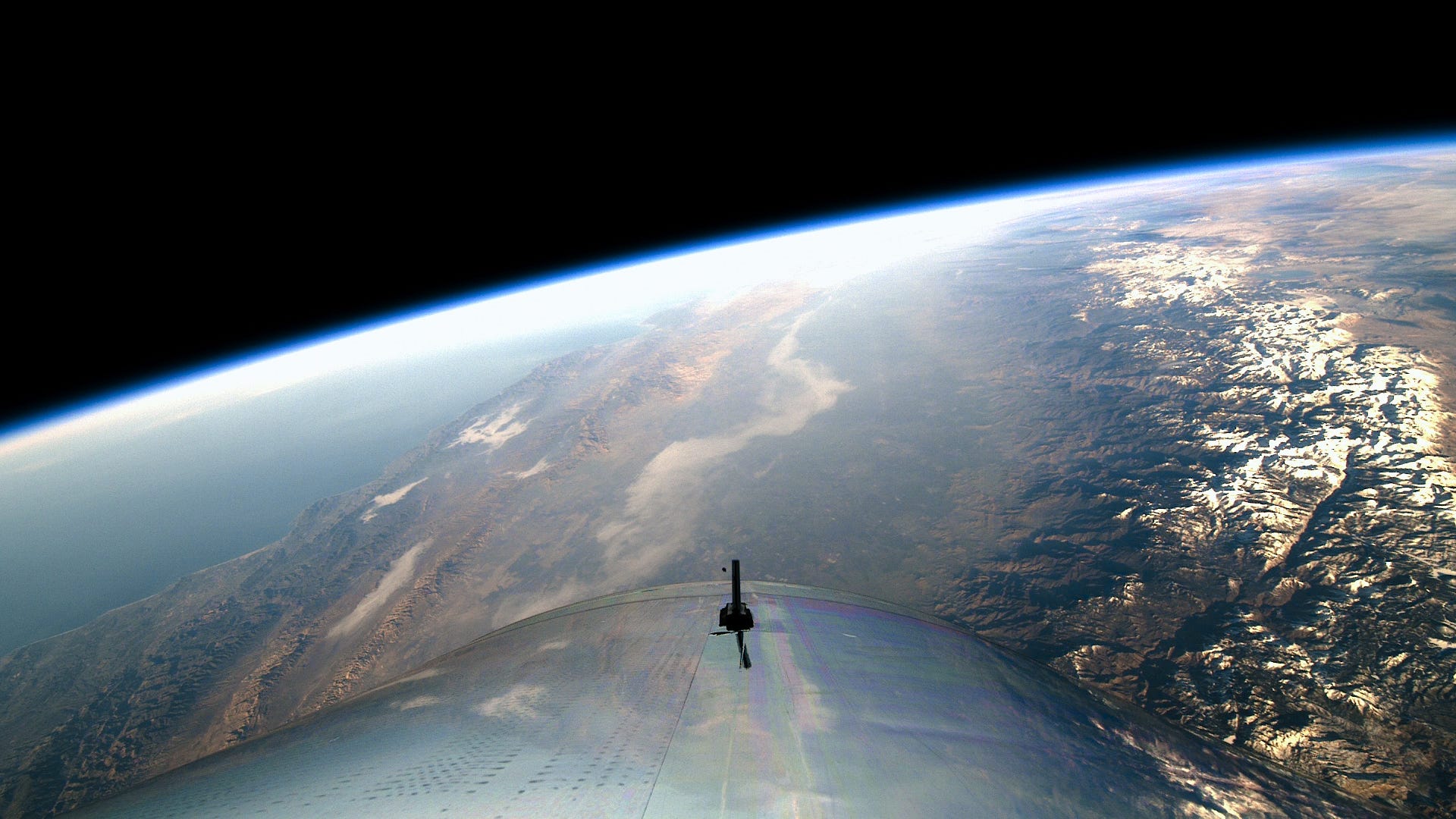
Virgin Galactic
As gravity starts to pull it back down to Earth, the VSS Unity is designed to rotate its wings and tail booms upward to help it decelerate as it plunges through the atmosphere.
At about 50,000 feet - the same altitude where the mothership dropped it - the VSS Unity should rotate its wings and booms back into place in order to catch the wind beneath them and glide to a smooth runway landing.
SpaceShipTwo only flies 55 miles up, which some say is too low for space
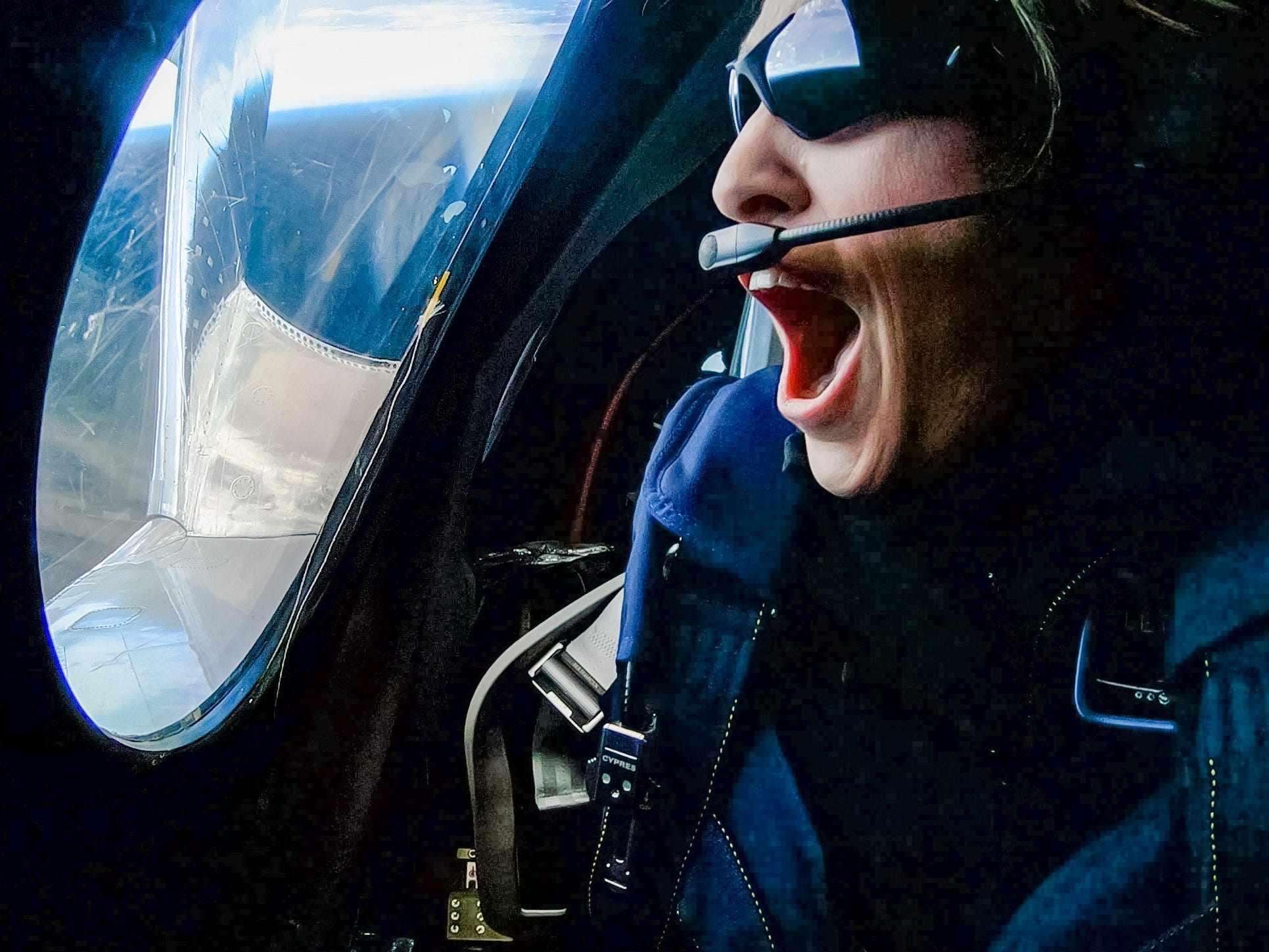
Virgin Galactic
Not everybody considers Branson's destination to be space, though.
"We wish him a great and safe flight, but they're not flying above the Kármán line and it's a very different experience," Blue Origin CEO Bob Smith told The New York Times after Branson's announcement last week.
The Kármán line is a hypothetical boundary between Earth and space, about 62 miles above sea level. That's where New Shepard is set to carry Bezos on July 20.
However, both NASA and the Federal Aviation Administration have awarded astronaut wings to pilots who flew past 50 miles - including Virgin Galactic pilots and Moses, the astronaut instructor on Sunday's flight. She's the only passenger the company has ever flown to 50 miles before.
Still, experts don't agree on where space begins. The outermost layer of Earth's atmosphere extends about 600 miles from sea level - more than twice as high as the International Space Station.
VSS Unity has flown people before
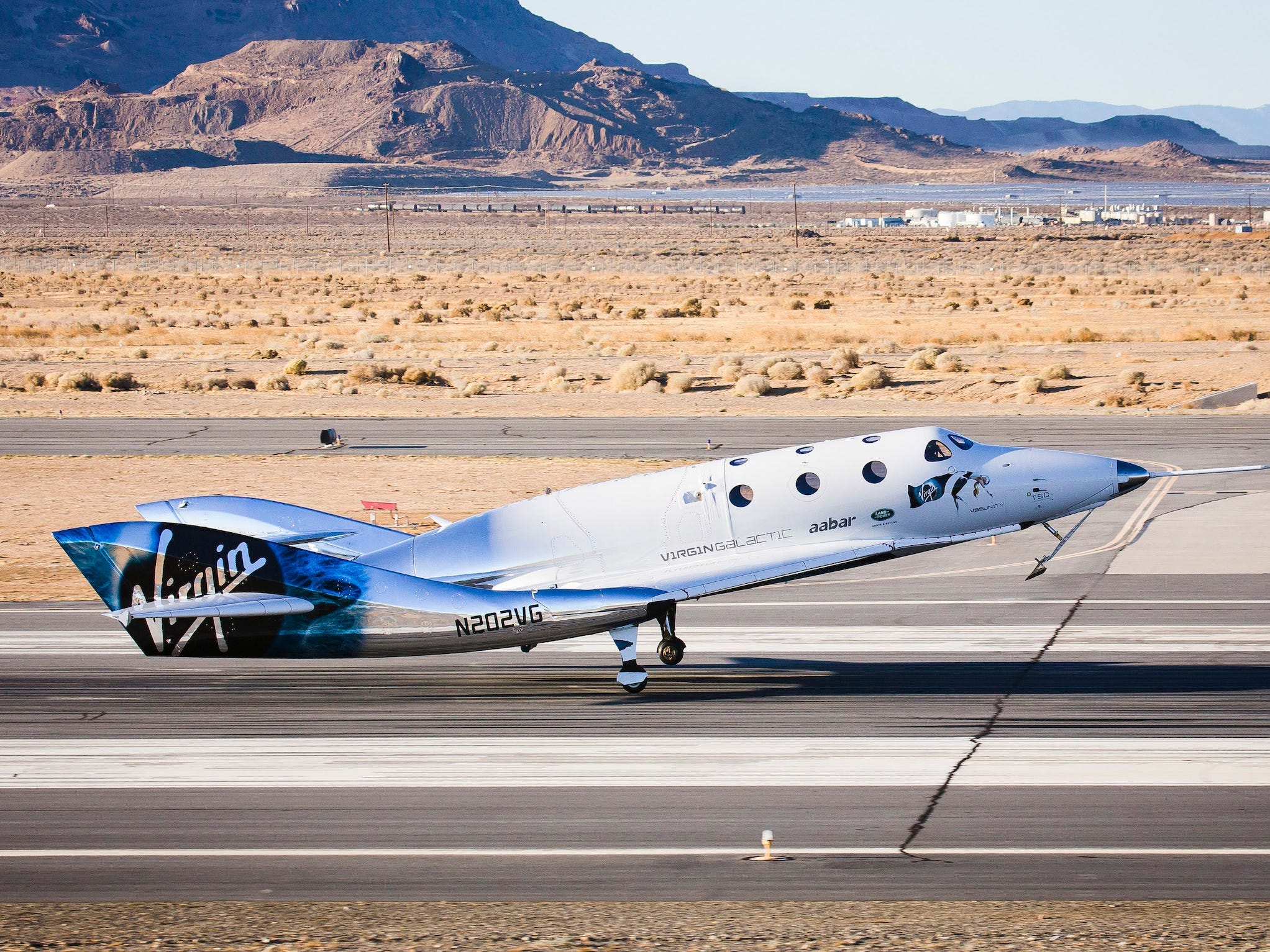
Virgin Galactic
Branson originally planned to ride SpaceShipTwo to these heights in 2014 or 2015. But Virgin Galactic had to delay those plans after its first version of the vehicle, called VSS Enterprise, broke apart mid-flight above the Mojave desert in October 2014, killing one pilot and injuring the other.
Since Virgin Galactic began testing VSS Unity in 2016, its flight record has been successful. Pilots have flown the VSS Unity to the edge of space and back three times since December 2018. Just one of those flights carried a passenger - Moses.
Blue Origin's rocket, New Shepard, has never flown people at all. And it doesn't have pilots.
Virgin Galactic originally planned to fly its first crew without Branson. He was scheduled to go on the flight after this but announced the change last week.
"If you hurry there's always the possibility of cutting corners, but the people that are managing the flight have a pretty high incentive not to kill their boss," John Logsdon, the founder of George Washington University's Space Policy Institute and a former member of the NASA Advisory Council, previously told Insider.
He added: "It's kind of amusing, these billionaires entertaining themselves by being on the first flights of their vehicles."

